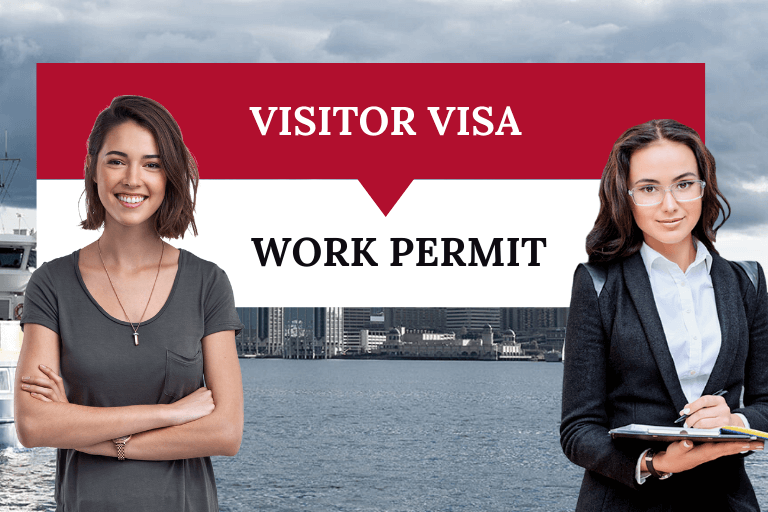Canada is a top destination for professionals seeking new career opportunities, thanks to its strong economy, high standard of living, and welcoming attitude towards immigrants. If you’re considering working in Canada, understanding the Canada work visa process is crucial. In this comprehensive guide, we’ll explore everything you need to know about obtaining a work visa for Canada, including the different types of work visas, the application process, eligibility requirements, and tips for a successful application.
Why Work in Canada?
Before diving into the specifics of the Canada work visa, it’s worth understanding why so many people choose Canada as their work destination. Here are some compelling reasons:
1. Strong Economy Canada boasts a stable and robust economy with a low unemployment rate, making it an attractive place for job seekers. Industries such as technology, healthcare, engineering, and finance are particularly thriving.
2. High Standard of Living Canada offers an excellent quality of life with its top-notch healthcare, education system, and public services. Cities like Toronto, Vancouver, and Montreal are renowned for their livability.
3. Cultural Diversity Canada is known for its multicultural society, where people from various backgrounds live and work together harmoniously. This diversity creates a rich cultural environment and a welcoming community for newcomers.
4. Work-Life Balance Canadian work culture emphasizes work-life balance, with reasonable working hours and generous vacation policies. This allows professionals to enjoy both their careers and personal lives.
Types of Canada Work Visas
There are several types of work visas available for foreign nationals wishing to work in Canada. The most common ones include:
1. Temporary Work Permit A Temporary Work Permit allows you to work in Canada for a specific employer and for a set duration. It is often employer-specific, meaning you can only work for the employer listed on your permit.
2. Open Work Permit An Open Work Permit allows you to work for any employer in Canada, with a few exceptions. This type of permit is typically granted to spouses of international students or skilled workers and to participants in specific programs.
3. International Mobility Program (IMP) The IMP allows employers to hire temporary workers without needing a Labour Market Impact Assessment (LMIA). It includes categories like intra-company transfers and the Global Talent Stream.
4. Labour Market Impact Assessment (LMIA) Required Work Permit This permit requires the employer to obtain an LMIA, proving that there is a need for a foreign worker to fill the job and that no Canadian worker is available.
5. Working Holiday Visa Part of the International Experience Canada (IEC) program, the Working Holiday Visa allows young people from participating countries to work and travel in Canada for up to two years.
Eligibility Requirements for a Canada Work Visa
To be eligible for a Canada work visa, you must meet certain requirements, which may vary depending on the type of visa you are applying for. Common eligibility criteria include:
1. Job Offer For most work permits, you need a valid job offer from a Canadian employer. The job offer should detail your job title, duties, duration of employment, and salary.
2. Labour Market Impact Assessment (LMIA) For employer-specific work permits, the employer must obtain an LMIA from Employment and Social Development Canada (ESDC), unless the position is exempt from this requirement.
3. Proof of Qualifications You may need to provide evidence of your qualifications, such as educational certificates, professional licenses, and work experience.
4. Health and Character Requirements Applicants must undergo a medical examination and provide police clearance certificates to prove they are in good health and have no criminal record.
5. Proof of Financial Support You must show that you have enough funds to support yourself and any family members who come with you to Canada.
The Application Process
The process of applying for a Canada work visa involves several steps. Here’s a step-by-step guide to help you navigate through it:
Step 1: Determine Your Eligibility First, determine which type of work permit you need and whether you meet the eligibility criteria. You can use the Come to Canada tool on the Government of Canada website to assess your eligibility.
Step 2: Gather Required Documents Prepare the necessary documents, which typically include:
- A valid passport
- A job offer letter from a Canadian employer
- Labour Market Impact Assessment (LMIA), if required
- Proof of qualifications (education, work experience)
- Police clearance certificates
- Medical examination results
- Proof of financial support
Step 3: Submit Your Application You can apply for a work permit online or on paper. Online applications are processed faster and allow you to track the status of your application. Create an account on the Immigration, Refugees and Citizenship Canada (IRCC) website and follow the instructions to submit your application.
Step 4: Biometrics Appointment After submitting your application, you may be required to provide biometrics (fingerprints and a photo). You’ll receive a notification with instructions on how to schedule your appointment.
Step 5: Wait for a Decision The processing time for work permit applications varies depending on the type of permit and your country of residence. You can check current processing times on the IRCC website.
Step 6: Receive Your Work Permit If your application is approved, you’ll receive a Port of Entry (POE) Letter of Introduction, which you must present to the immigration officer when you arrive in Canada. The actual work permit will be issued at the port of entry.
Tips for a Successful Application
Applying for a Canada work visa can be complex, but these tips can help you increase your chances of success:
1. Ensure Complete and Accurate Documentation Provide all required documents and ensure they are accurate and complete. Incomplete applications can lead to delays or refusals.
2. Double-Check Eligibility Requirements Make sure you meet all the eligibility requirements for the specific type of work permit you are applying for.
3. Seek Professional Assistance Consider consulting an immigration lawyer or consultant to help you navigate the process and ensure your application is strong.
4. Stay Informed Keep up-to-date with any changes in immigration policies and requirements by regularly checking the IRCC website.
5. Be Honest Provide truthful and accurate information in your application. Misrepresentation can lead to a refusal and may affect future immigration applications.
Conclusion
Obtaining a Canada work visa is a significant step towards building a successful career and enjoying a high quality of life in Canada. By understanding the different types of work visas, meeting eligibility requirements, and following the application process carefully, you can increase your chances of a successful application. With careful planning and preparation, you can make your dream of working in Canada a reality.
Ready to start your journey? Begin by assessing your eligibility and gathering the necessary documents. Good luck.


